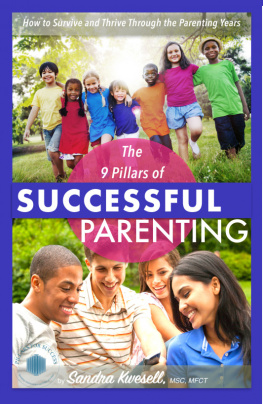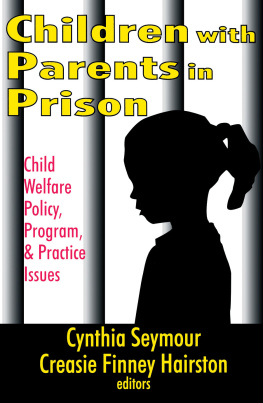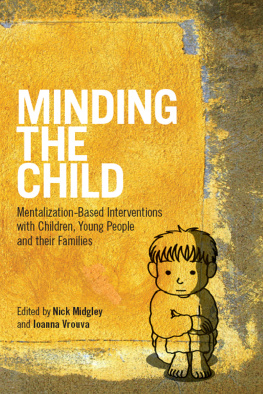CHILDREN LIVING IN TRANSITION
Children Living in Transition
HELPING HOMELESS AND FOSTER CARE CHILDREN AND FAMILIES
Cheryl Zlotnick
EDITOR
 COLUMBIA UNIVERSITY PRESS NEW YORK
COLUMBIA UNIVERSITY PRESS NEW YORKCOLUMBIA UNIVERSITY PRESS
Publishers Since 1893
New York Chichester, West Sussex
cup.columbia.edu
Copyright 2014 Columbia University Press
All rights reserved
E-ISBN 978-0-231-53600-4
Library of Congress Cataloging-in-Publication Data
Children living in transition : helping homeless and foster care children and families / edited by Cheryl Zlotnick.
pages cm
Includes bibliographical references and index.
ISBN 978-0-231-16096-4 (cloth : alk. paper) ISBN 978-0-231-16097-1 (pbk. : alk. paper)
ISBN 978-0-231-53600-4 (ebook)
1. Foster children. 2. Foster parents. 3. Foster home care. 4. Homeless children. I. Zlotnick, Cheryl, editor of compilation.
HV873.C48 2014
362.73'3dc23
2013034468
A Columbia University Press E-book.
CUP would be pleased to hear about your reading experience with this e-book at .
Cover design: Julia Kushnirsky
Cover illustration: Claire Lazarus
References to websites (URLs) were accurate at the time of writing. Neither the author nor Columbia University Press is responsible for URLs that may have expired or changed since the manuscript was prepared.
We write this book in honor of the strength, courage, and resilience of families living in transition, whether they are temporarily residing in homeless shelters, foster care, doubled-up situations, or a series of different locations with friends or family.
We wish to dedicate this book:
to the frontline workers, including medical, nursing, mental health, case management, outreach, and social service professionals, who are committed to helping families in transition to obtain greater stability and improved living situations;
to the administrators and office workers who support the programs operation, without whom the work to support transitional families would not be possible; and
to the memory of Mohini Singh and Ellen Eve Seligman, our beloved colleagues at the Center for the Vulnerable Child (CVC), who worked tirelessly to support families in transition.
CONTENTS
IN THE UNITED STATES, an increasing number of children are being shuffled from one transitional and temporary situation to another: living with family or friends, staying in homeless shelters, residing in other kinds of out-of-home placements (away from birth parents) such as foster care or group homes. Why are children and families living in these transitional situations? Many researchers and administrators believe there are two major contributing factors: (1) intergenerational poverty, combined with a shortage of affordable permanent housing, transitional housing, and long-term family shelters; and (2) parents suffering from trauma, mental illness, and substance abuse problems.
For adults who are in the transitional living situation of homelessness, day-to-day life is a struggle, but when the family unit includes children, the challenges are multiplied. Children are still growing and developing. Living in unsafe environments inflicts not only physical harm but also psychological harm on children. Both have potentially permanent deleterious ramifications. For some children, the psychological stress of living in transition is compounded by growing up with parents who are suffering from trauma, mental illness, and/or substance abuse. Families who live in shelters or who have had contact with the child welfare system are exposed to the scrutiny of representatives from shelters, police and criminal justice departments, substance abuse or mental health treatment centers, and schools. If the representatives of these entities believe that the children are living in potentially dangerous situations, they can begin procedures to have them removed from their birth parents and placed in foster care.
Although homeless shelters and other tenuous living situations are far from ideal, children placed with friends/family or in foster care may experience this change as even more isolating and scary than the homeless shelters where they have been living. After all, placement in foster homes or with friends/family separates them from the one constant in their livestheir birth parent(s). Disconnection from parents coupled with yet another change in residence results in anxiety and trauma, which different children express in different ways. While some children exhibit aggressive and angry behaviors, others appear to be completely withdrawn, docile, or even willing to approach and embrace utter strangers. It is not easy to provide care for children who are exhibiting difficult behaviors as a result of trauma. Unfortunately, in some situations the difficult behaviors, which may be linked to instability, may precipitate further instability. For example, a child who has lived in a series of homeless shelters with his or her birth parents and then, due to family circumstances, is placed in foster care, may begin exhibiting aggressive and hostile behaviors as a result of the accumulating stress and trauma. Not all foster parents are able to cope with these difficult behaviors. Some may request that the child be removed from their home and placed in another foster home. This scenario is not uncommon. Sadly, the children who exhibit the behaviors that are most difficult to deal with are often the very children who are suffering most from trauma and who will be further destabilized and traumatized by cycling through a series of foster care placements.







 COLUMBIA UNIVERSITY PRESS NEW YORK
COLUMBIA UNIVERSITY PRESS NEW YORK
